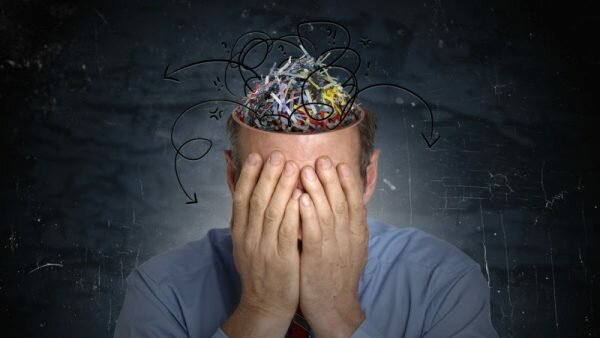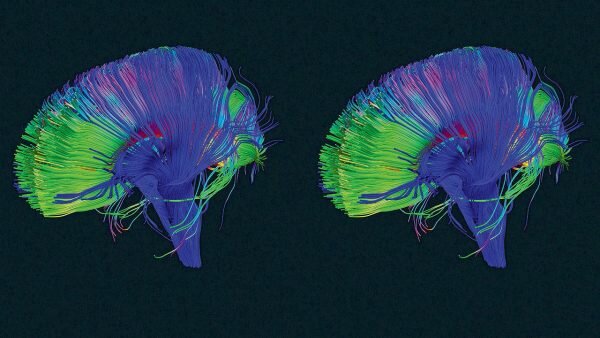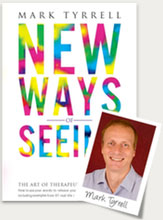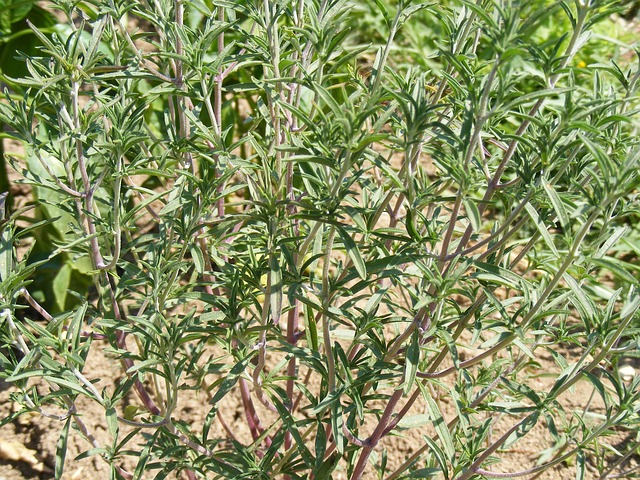Don’t Believe the Hype – 10 Persistent Cancer Myths Debunked
Google ‘
cancer’
and you’ll be faced with millions of web pages. And the number of
YouTube videos you find if you look up ‘cancer cure’ is similarly vast.
The problem is that much of the information out there is at best
inaccurate, or at worst dangerously misleading. There are plenty of
evidence-based, easy to understand pages about cancer, but there are just as many, if not more, pages spreading myths.
And it can be hard to distinguish fact from fiction, as much of the
inaccurate information looks and sounds perfectly plausible. But if you
scratch the surface and look at the
evidence, many continually perpetuated ‘truths’ become unstuck.
In this post, we want to set the record straight on 10 cancer myths
we regularly encounter. Driven by the evidence, not by rhetoric or
anecdote, we describe what the reality of research actually shows to be
true.
- Myth 1: Cancer is a man-made, modern disease
- Myth 2: Superfoods prevent cancer
- Myth 3: ‘Acidic’ diets cause cancer
- Myth 4: Cancer has a sweet tooth
- Myth 5: Cancer is a fungus – and sodium bicarbonate is the cure
- Myth 6: There’s a miracle cancer cure…
- Myth 7: …And Big Pharma are suppressing it
- Myth 8: Cancer treatment kills more than it cures
- Myth 9: We’ve made no progress in fighting cancer
- Myth 10: Sharks don’t get cancer
Myth 1: Cancer is a man-made, modern disease

It might be more prominent in the public consciousness now than in times gone by, but cancer
isn’t just a ‘modern’, man-made disease of Western society. Cancer has existed as long as humans have. It was
described thousands of years ago by Egyptian and Greek physicians, and researchers have discovered tell-tale signs of cancer in a
3,000-year-old skeleton.
While it’s certainly true that global lifestyle-related diseases like cancer
are on the rise,
the biggest risk factor for cancer is age.
The simple fact is that more people are living long enough to develop
cancer because of our success in tackling infectious diseases and other
historical causes of death such as malnutrition. It’s perfectly normal
for DNA damage in our cells to build up as we age, and such damage can
lead to cancer developing.
We’re also now able to diagnose cancers more accurately, thanks to advances in screening, imaging and pathology.
Yes,
lifestyle,
diet and other things like
air pollution collectively have a huge impact on our risk of cancer –
smoking for
instance is behind a quarter of all cancer deaths in the UK – but
that’s not the same as saying it’s a modern, man-made disease. There are
plenty of natural causes of cancer – for example, one in six worldwide
cancers is caused by
viruses and bacteria.
Myth 2: Superfoods prevent cancer

Blueberries, beetroot, broccoli, garlic, green tea… the list goes on. Despite thousands of websites claiming otherwise,
there’s no such thing as a ‘superfood’. It’s a marketing term used to sell products and has
no scientific basis.
That’s not to say you shouldn’t think about what you eat. Some foods
are clearly healthier than others. The odd blueberry or mug of green tea
certainly could be part of a
healthy, balanced diet.
Stocking up on fruits and veg is a great idea, and eating a range of
different veg is helpful too, but the specific vegetables you choose
doesn’t really matter.
Our bodies are complex and cancer is too, so it’s
gross oversimplification to say that any one food, on its own, could have a major influence over your chance of developing cancer.
The steady accumulation of evidence over several decades points to a
simple, but not very newsworthy fact that the best way to reduce your
risk of cancer is by a series of
long-term healthy behaviours such as not smoking, keeping active, keeping a healthy body weight and cutting back on alcohol.
Myth 3: ‘Acidic’ diets cause cancer

Some myths about cancer are surprisingly persistent, despite flying
in the face of basic biology. One such idea is that overly ‘acidic’
diets cause your blood to become ‘too acidic’, which can increase your
risk of cancer. The proposed answer: increase your intake of healthier
‘alkaline’ foods like green vegetables and fruits (including,
paradoxically,
lemons).
This is biological nonsense. True, cancer cells can’t live in an overly alkaline environment,
but neither can any of the other cells in your body.
Blood is usually slightly alkaline. This is tightly regulated by the
kidneys within a very narrow and perfectly healthy range. It can’t be
changed for any meaningful amount of time by what you eat. And while
eating green veg is certainly healthy, that’s not because of any effect
on how acid or alkaline your body is.
There is something called
acidosis.
This is a physiological condition that happens when your kidneys and
lungs can’t keep your body’s pH (a measure of acidity) in balance. It is
often the result of serious illness or poisoning. It can be
life-threatening and needs urgent medical attention, but it’s not down
to overly acidic diets.
We know that the immediate environment around cancer cells (the
microenvironment)
can become acidic. This is due to differences in the way that tumours
create energy and use oxygen compared with healthy tissue. Researchers
are working hard to understand how this happens, in order to develop
more effective cancer treatments.
But
there’s no good evidence to prove that diet can manipulate whole body pH, or that it has an impact on cancer.
Myth 4: Cancer has a sweet tooth

Another idea
we see a lot is that sugar apparently ‘feeds cancer cells’, suggesting that it should be completely banished from a patient’s diet.
This is an unhelpful oversimplification of a highly complex area that we’re only just starting to understand.
‘Sugar’ is a catch-all term. It refers to a range of molecules
including simple sugars found in plants, glucose and fructose. The white
stuff in the bowl on your table is called sucrose and is made from
glucose and fructose stuck together. All sugars are carbohydrates,
commonly known as carbs – molecules made from carbon, hydrogen and
oxygen.
Carbs – whether from cake or a carrot – get broken down in our
digestive system to release glucose and fructose. These get absorbed
into the bloodstream to provide energy for us to live.
All our cells, cancerous or not, use glucose for energy.
Because cancer cells are usually growing very fast compared with
healthy cells, they have a particularly high demand for this fuel.
There’s also
evidence that they use glucose and produce energy in a different way from healthy cells.
Researchers are working to understand the differences in energy usage in cancers compared with healthy cells, and trying to
exploit them to develop better treatments (including the interesting but far from proven drug
DCA).
But all this doesn’t mean that sugar from cakes, sweets and other
sugary foods specifically feeds cancer cells, as opposed to any other
type of carbohydrate. Our body
doesn’t pick and choose which cells get what fuel.
It converts pretty much all the carbs we eat to glucose, fructose and
other simple sugars, and they get taken up by tissues when they need
energy.
While it’s very sensible to limit sugary foods as part of an overall healthy diet and to avoid putting on weight,
that’s a far cry from saying that sugary foods specifically feed cancer cells.
Both the ‘acidic diet’ and ‘sugar feeds cancer’ myths distort
sensible dietary advice. And when it comes to offering diet tips,
research shows that the same boring healthy eating advice still holds
true. Fruit, vegetables, fibre, white meat and fish are good. Too much
fat, salt, sugar, red or processed meat and alcohol are less so.
Myth 5: Cancer is a fungus – and sodium bicarbonate is the cure

This ‘theory’ comes from the not-very-observant observation that “cancer is always white”.
One obvious problem with this idea – apart from the fact that cancer
cells are clearly not fungal in origin – is that cancer isn’t always
white. Some tumours are. But some aren’t. Ask any pathologist or cancer
surgeon, or have a look on Google Image search (but maybe not after
lunch…).
Proponents of this theory say that cancer is caused by infection by the
fungus candida, and that tumours are actually the body’s attempt at protecting itself from this infection.
But there’s no evidence to show that this is true.
Furthermore, plenty of perfectly healthy people can be infected with
candida – it’s part of the very normal array of microbes that live in
(and on) all of us. Usually our immune system keeps candida in check,
but infections can get more serious in people with compromised immune
systems, such as those who are HIV-positive.
The ‘simple solution’ is apparently to inject tumours with baking
soda (sodium bicarbonate). This isn’t even the treatment used to treat
proven fungal infections, let alone cancer. On the contrary,
there’s good evidence that high doses of sodium bicarbonate can lead to serious – even fatal – consequences.
Some studies suggest
that sodium bicarbonate can affect cancers transplanted into mice or
cells grown in the lab, by neutralising the acidity in the
microenvironment immediately around a tumour. And researchers in the US
are running a
small clinical trial investigating
whether sodium bicarbonate capsules can help to reduce cancer pain and
to find the maximum dose that can be tolerated, rather than testing
whether it has any effect on tumours.
As far as we are aware, there have been no published clinical trials of sodium bicarbonate as a treatment for cancer.
It’s also worth pointing out that it’s not clear whether it’s
possible to give doses of sodium bicarbonate that can achieve any kind
of meaningful effect on cancer in humans, although it’s something that
researchers are investigating.
Because the body strongly resists attempts to change its pH, usually
by getting rid of bicarbonate through the kidneys, there’s a risk that
doses large enough to significantly affect the pH around a tumour might
cause a serious condition known as alkalosis.
One estimate suggests
that a dose of around 12 grams of baking soda per day (based on a 65 kg
adult) would only be able to counteract the acid produced by a tumour
roughly one cubic millimetre in size. But doses of more than about 30
grams per day are likely to cause severe health problems – you do the
maths.
Myth 6: There’s a miracle cancer cure…

From
cannabis to
coffee enemas, the internet is awash with videos and personal anecdotes about ‘natural’ ‘miracle’ cures for cancer.
But extraordinary claims require extraordinary evidence –
YouTube videos and Facebook posts are emphatically not scientific evidence and aren’t the same as good-quality, peer-reviewed evidence.
In many cases it’s impossible to tell whether patients featured in
such anecdotal sources have been ‘cured’ by any particular alternative
treatment or not. We know nothing about their medical diagnosis, stage
of disease or outlook, or even if they actually had cancer in the first
place. For instance, we don’t know what other cancer treatments they
had.
And we only hear about the success stories – what about the people
who have tried it and have not survived? The dead can’t speak, and often
people who make bold claims for ‘miracle’ cures only pick their best
cases, without presenting the full picture.
This highlights the importance of publishing data from peer-reviewed,
scientifically rigorous lab research and clinical trials. Firstly,
because conducting proper clinical studies enables researchers to prove
that a prospective cancer treatment is safe and effective. And secondly,
because publishing these data allows doctors around the world to judge
for themselves and use it for the benefit of their patients.
This is the standard to which all cancer treatments should be held.
That’s not to say the natural world isn’t a source of potential
treatments, from aspirin (willow bark) to penicillin (mould). For
example, the cancer drug taxol was first extracted from the bark and
needles of the Pacific Yew tree.
But that’s a far cry from saying you should chew bark to combat a
tumour. It’s an effective treatment because the active ingredient has
been purified and tested in clinical trials. So we know that it’s safe
and effective, and what dose to prescribe.
Of course people with cancer want to beat their disease by any means
possible. And it’s completely understandable to be searching high and
low for potential cures. But our advice is to be wary of anything
labelled a ‘miracle cure’, especially if people are trying to sell it to
you.
Wikipedia has
this excellent list of ineffective cancer treatments that
are often touted as miracle cures, which is worth a browse. And if you
want to know about the scientific evidence about cannabis, cannabinoids
and cancer – a topic we’re often asked about –
please take a look at our extensive blog post on the subject.
Myth 7: … and Big Pharma are suppressing it

Hand in hand with the idea that there is a cornucopia of ‘miracle
cures’ is the idea that governments, the pharmaceutical industry and
even charities are colluding to hide the cure for cancer because they
make so much money out of existing treatments.
Whatever the particular ‘cure’ being touted, the logic is usually the
same: it’s readily available, cheap and can’t be patented, so the
medical establishment is suppressing it in order to line its own
pockets. But,
as we’ve written before, there’s no conspiracy – sometimes it just doesn’t work.
There’s no doubt that the pharmaceutical industry has a number of
issues with transparency and clinical trials that it needs to address
(the book
Bad Pharma by Ben Goldacre is a handy primer). We push regulators and pharmaceutical companies hard to
make sure that
effective drugs are made available at a fair price to the NHS –
although it’s important to remember that developing and trialling new
drugs costs a lot of money, which companies need to recoup.
Problems with conventional medicine don’t automatically prove that alternative ‘cures’ work. To use a metaphor, just because cars sometimes crash doesn’t mean that flying carpets are a viable transport option.
It simply doesn’t make sense that pharmaceutical companies would want
to suppress a potential cure. Finding a highly effective therapy would
guarantee huge worldwide sales.
And the argument that treatments can’t be patented doesn’t hold up.
Pharma companies are not stupid, and they are quick to jump on promising
avenues for effective therapies. There are always ways to repackage and
patent molecules, which would give them a return on the investment
required to develop and test them in clinical trials (a cost that can
run into many millions) if the treatment turns out to work.
It’s also worth pointing out that charities such as Cancer Research
UK and government-funded scientists are free to investigate promising
treatments without a profit motive. And it’s hard to understand why NHS
doctors – who often prescribe generic, off-patent drugs – wouldn’t use
cheap treatments if they’d been shown to be effective in clinical
trials.
For example, we’re funding large-scale trials of aspirin – a drug
first made in 1897, and now one of the most widely-used off-patent drugs
in the world. We’re researching
whether it can prevent bowel cancer in people at high risk,
reduce the side effects of chemotherapy, and even
prevent cancer coming back and improve survival.
Finally, it’s worth remembering that we are all human – even
politicians and Big Pharma executives – and cancer can affect anyone.
People in pharmaceutical companies, governments, charities and the wider
‘medical establishment’ all can and do die of cancer too.
Here at Cancer Research UK we have seen loved ones and colleagues go
through cancer. Many of them have survived. Many have not. To suggest
that we are – collectively and individually – hiding ‘the cure’ is not
only absurd, it’s offensive to the global community of dedicated
scientists, to the staff and supporters of cancer research organisations
such as Cancer Research UK and, most importantly, to cancer patients
and their families.
Myth 8: Cancer treatment kills more than it cures

Let’s be clear, cancer treatment – whether chemotherapy, radiotherapy
or surgery – is no walk in the park. The side effects can be tough.
After all, treatments that are designed to kill cancer cells will
inevitably affect healthy cells too.
And sometimes, sadly, treatment doesn’t work. We know that it’s very
difficult to treat late-stage cancer that has spread throughout the
body, and while treatment can provide relief from symptoms and prolong
life, it’s not going to be a cure for very advanced cancers.
Surgery is still the most effective treatment we have for cancer,
provided it’s diagnosed early enough for an operation to be done. And
radiotherapy helps cure more people than cancer drugs. Yet chemotherapy
and other cancer drugs have a very important part to play in cancer
treatment – in some cases helping to cure the disease, and in others
helping to prolong survival.
The claims on the internet that chemotherapy is “only 3 per cent effective” are
highly misleading and outdated, and are explored in more depth in these
two posts from the Science Based Medicine blog.
We also wrote
this post in response to concerns that chemotherapy might “encourage cancer”.
It important to point out that in an increasing number of cases, the
drugs do work. For example, more than 96 per cent of all men are now
cured of testicular cancer,
compared to fewer than 70 per cent in the 1970s thanks in part to a
drug we helped to develop called cisplatin. And three-quarters of
children with cancer
are now cured, compared with around a quarter in the late 1960s – most of them are alive today directly thanks to chemotherapy.
We know that
we still have a long way to go until we have effective, kinder treatments for all types of cancer.
And it’s important that doctors, patients and their families are
realistic and honest about the best options for treatment, especially
when cancer is very advanced.
It may be better to opt for treatment aimed at reducing pain and
symptoms rather than attempting to cure the disease (palliative care).
Balancing quality and quantity of life is always going to be an issue in
cancer treatment, and it’s one that each patient must decide for
themselves.
Myth 9: We’ve made no progress in fighting cancer

This simply isn’t true. Thanks to advances in research, long-term (10+ years)
survival from cancer has doubled in the UK over the past 40 years, and
death rates have fallen by 10 per cent over the past decade alone.
This article by our chief clinician, Professor Peter Johnson, outlines some of the key facts.
By definition, these figures relate to people treated at least 10
years ago. It’s likely that the patients being diagnosed and treated
today have an even better chance of survival.
To see how the picture has changed, make yourself a cuppa and settle
down to watch this hour-long documentary we helped to make –
The Enemy Within: 50 years of fighting cancer.
From the early days of chemotherapy in the 50s and 60s to the latest
‘smart’ drugs and pinpoint-accurate radiotherapy, it highlights how far
we’ve come over the years.
There’s still a long way to go. There are some cancers where progress
has been much slower – such as lung, brain, pancreatic and oesophageal
cancers. And when you lose someone you love to cancer, it can feel as
though no progress has been made at all.
That’s why we’re working so hard to beat cancer sooner, to make sure that nobody loses their life prematurely to the disease.
Myth 10: Sharks don’t get cancer

Yes
they do.
This excellent article goes into why the myth about the cancer-free shark has been so persistent.
If you want to learn more about cancer and marijuana check this article out:
http://bit.ly/1haHM4S




















